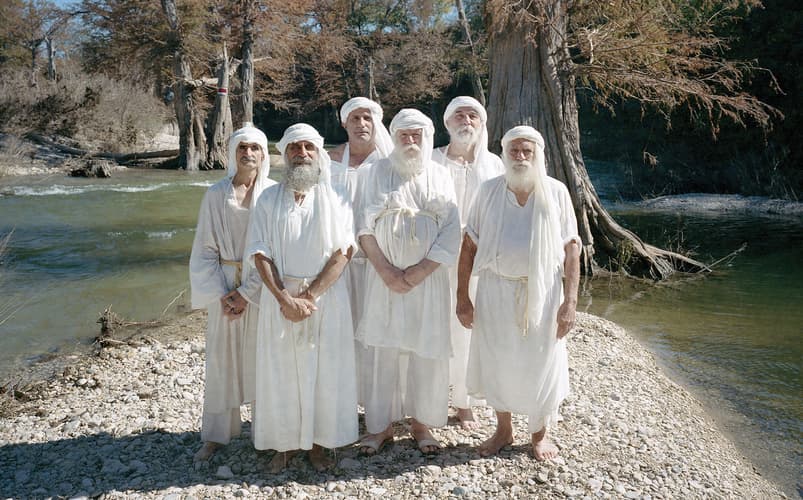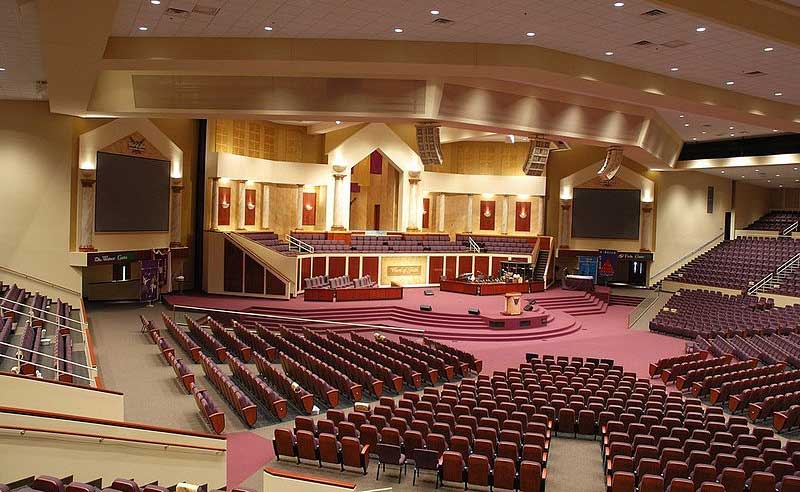What are core Mandaeism Beliefs?
Today we will talk about Mandaeism Beliefs After we had learned that the religion of the Mandaeans (from manda, “knowledge”) is a self-contained, unique system belonging to the general stratum of the Gnosticism of late antiquity. Thus Mandaeism shows affinities with Judaism and Christianity. For geographical reasons, it also exhibits certain early influences from the Iranian religious milieu. The Mandaeans live, as their ancestors did, along the rivers and waterways of southern Iraq and Khuzistan, Iran. Known by their neighbors as Subbi (baptizers), they form a Gnostic baptist community.
Mandaeism, as the religion of the Mandaean people, is based on a set of religious creeds and doctrines. The corpus of Mandaean literature is quite large and covers topics such as eschatology, the knowledge of God, and the afterlife.
Principle Mandaeism Beliefs:
Recognition of one God known as Hayyi Rabbi, meaning The Great Life or The Great Living (God), whose symbol is Living Water (Yardena). It is therefore necessary for Mandaeans to live near rivers. God personifies the sustaining and creative force of the universe.
Power of Light, which is vivifying and personified by Malka d-Nhura (‘King of Light’), another name for Hayyi Rabbi, and the uthras (angels or guardians) that provide health, strength, virtue, and justice.
Immortality of the soul; the fate of the soul is the main concern with the belief in the next life, where there is reward and punishment. There is no eternal punishment since God is merciful.
Fundamental Tenets:
According to E. S. Drower, the Mandaean Gnosis is characterized by nine features, which appear in various forms in other gnostic sects.
- A supreme formless Entity, the expression of which in time and space is a creation of spiritual, etheric, and material worlds and beings. Production of these is delegated by It to a creator or creators who originated It. The cosmos is created by Archetypal Man, who produces it in similitude to his shape.
- Dualism: a cosmic Mother and Father, Light and Darkness, Left and Right, syzygy in cosmic and microcosmic form.
- As a feature of this dualism, counter-types (dmuta) exist in a world of ideas (Mshunia Kushta).
- The soul is portrayed as an exile, a captive; his home and origin being the supreme Entity to which he eventually returns.
- Planets and stars influence fate and human beings and are also places of detention after death.
- A savior spirit or savior spirits assist the soul on his journey through life and after it to ‘worlds of light’.
- A cult language of symbol and metaphor. Ideas and qualities are personified.
- ‘Mysteries’, i.e. sacraments to aid and purify the soul, to ensure its rebirth into a spiritual body, and its ascent from the world of matter. These are often adaptations of existing seasonal and traditional rites to which an esoteric interpretation is attached. In the case of the Naṣoraeans, this interpretation is based on the Creation story (see 1 and 2), especially on the Divine Man, Adam, as crowned and anointed King-priest.
- Great secrecy is enjoined upon initiates; full explanation of 1, 2, and 8 being reserved for those considered able to understand and preserve the gnosis.

Cosmology:
As noted above, Mandaean theology is not systematic. There is no one single authoritative account of the creation of the cosmos, but rather a series of several accounts. Some scholars, such as Edmondo Lupieri, maintain that comparison of these different accounts may reveal the diverse religious influences upon which the Mandaeans have drawn and how the Mandaean religion has evolved.
The most common name for God in Mandaeism is Hayyi Rabbi (‘The Great Life’ or ‘The Great Living God’). Other names used are Mare d’Rabuta (‘Lord of Greatness’), Mana Rabba (‘The Great Mind’), Malka d-Nhura (‘King of Light’), and Hayyi Qadmaiyi (‘The First Life’). Mandaeans recognize God to be the eternal, creator of all, the only in domination who has no partner.
There are numerous uthras (angels or guardians), manifested from the light, that surround and perform acts of worship to praise and honor God. Prominent amongst them include Manda d-Hayyi, who brings manda (knowledge or gnosis) to Earth, and Hibil Ziwa, who conquers the World of Darkness. Some uthras are commonly referred to as emanations and are subservient beings to ‘The First Life’; their names include Second, Third, and Fourth Life (i.e. Yushamin, Abatur, and Ptahil).
Ptahil, the ‘Fourth Life’, alone does not constitute the demiurge, but only fills that role insofar as he is seen as the creator of the material world with the help of the evil spirit Ruha. Therefore, the material world is a mixture of ‘light’ and ‘dark’. Ptahil is the lowest of a group of three emanations, the other two being Yushamin, the ‘Second Life’ (also spelled Joshamin), and Abatur, the ‘Third Life’. Abatur’s demiurgic role consists of weighing the souls of the dead to determine their fate. The role of Yushamin, the first emanation, is more obscure; wanting to create a world of his own, he was punished for opposing the King of Light (‘The First Life’) but was ultimately forgiven.
in Mandaeism Beliefs, While Mandaeans agree with other gnostic sects that the world is a prison governed by the planetary archons, they do not view it as a cruel and inhospitable one. Similar to the Essenes, it is forbidden for a Mandaean to reveal the names of the angels to a gentile.
Chief prophets:
Mandaeans recognize several prophets. Yahia-Yohanna, known in Christianity as John the Baptist, is accorded a special status, higher than his role in Christianity and Islam. Mandaeans do not consider John to be the founder of their religion but revere him as one of their greatest teachers, tracing their beliefs back to Adam.
in Mandaeism Beliefs, Mandaeans do not believe in the sanctity of Abraham, Moses, or Jesus, however, they consider Jesus and Abraham to have been originally Mandaean They recognize other prophetic figures from the Abrahamic religions, such as Adam, his sons Hibil (Abel) and Sheetil (Seth), and his grandson Anush (Enosh), as well as Nuh (Noah), Sam (Shem), and Ram (Aram), whom they consider to be their direct ancestors.
Mandaeans also do not recognize the Holy Spirit in the Talmud and Bible in the same way. Epithets of Ruha include Ruha d-Qudsha (Holy Spirit) and Ruha Masțanita (Ruha the seductress). She is viewed negatively as the personification of the lower, emotional, and feminine elements of the human psyche.
Scriptures in Mandaeism Beliefs:
The Mandaeans have a large corpus of religious scriptures, the most important of which is the Ginza Rabba or Ginza, a collection of history, theology, and prayers.The Ginza Rabba is divided into two halves—the Genzā Smālā or “Left Ginza”, and the Genzā Yeminā or “Right Ginza”. By consulting the colophons in the Left Ginza, Jorunn J. Buckley has identified an uninterrupted chain of copyists to the late second or early third century. The colophons attest to the existence of the Mandaeans during the late Parthian Empire.
The oldest texts are lead amulets from about the third century CE, followed by incantation bowls from about 600 CE. The important religious texts survived in manuscripts that are not older than the sixteenth century, with most coming from the eighteenth and nineteenth centuries.
Although the Ginza continued to evolve under the rule of the Sasanian Empire and the Islamic caliphates, few textual traditions can lay claim to such extensive continuity.
Another important text is the Haran Gawaita, which tells the history of the Mandaeans. According to this text, a group of Nasoraeans (Mandean priests) left Judea before the destruction of Jerusalem in the first century CE and settled within the Parthian Empire.
Other important books include the Qolusta, the canonical prayerbook of the Mandaeans, which was translated by E. S. Drower. One of the chief works of Mandaean scripture, accessible to laymen and initiates alike, is the Mandaean Book of John, which includes a dialogue between John and Jesus. In addition to the Ginza, Qolusta, and Draša d-Yahya, there is the Diwan Abatur, which contains a description of the ‘regions’ the soul ascends through, and the Book of the Zodiac (Asfar Malwāshē). Finally, some pre-Muslim artifacts contain Mandaean writings and inscriptions, such as some Aramaic incantation bowls.
Mandaeism Beliefs, Mandaean Ritual commentaries (esoteric exegetical literature), which are typically written in scrolls rather than codices, include:
- The Thousand and Twelve Questions (Alf Trisar Šuialia)
- The Coronation of the Great Šišlam
- The Great “First World”
- The Lesser “First World”
- The Scroll of Exalted Kingship
- The Baptism of Hibil Ziwa
The language in which the Mandaean religious literature was originally composed is known as Mandaic, a member of the Aramaic group of dialects. It is written in the Mandaic script, a cursive variant of the Parthian chancellery script. Many Mandaean lay people do not speak this language, although some members of the Mandaean community resident in Iran and Iraq continue to speak Neo-Mandaic, a modern version of this language.
If you see anyone hungry, feed him; if you see anyone thirsty, give him a drink.
— Right Ginza I.105
Give alms to the poor. When you give do not attest it. If you give with your right hand do not tell your left hand. If you give with your left hand do not tell you’re right hand.
Ye the chosen ones … Do not wear iron and weapons; let your weapons be knowledge and faith in the God of the World of Light. Do not commit the crime of killing any human being.
Ye the chosen ones … Do not rely on kings and rulers of this world, do not use soldiers and weapons or wars; do not rely on gold or silver, for they all will forsake your soul. Your souls will be nurtured by patience, love, goodness, and love for Life.
Mandaeism Beliefs | Rituals:
Among the Mandaeans, repeated baptism (masbuta ) takes place on Sundays and special festival days. Two small rites of ablution, rishama, and tamasha, are performed by the individual Mandaean and, unlike the masbuta, require no priest. At baptism, the male candidates, clothed in white, and female candidates, who wear a black cloak over the white garment, line up on the riverbank. One at a time, each descends into the water and immerses himself or herself three times, whereupon the priest, in full ritual garb, submerges him or her thrice again. As the candidates’ crouch in the water, each receives a triple sign on the forehead with water and drinks three handfuls of water. Investiture with a tiny myrtle wreath—a symbol of spirit and life—follows. Baptisms completed, the candidates sit on the riverbank. Now each is anointed on the forehead with sesame oil and partakes in a meal of bread (pihta ) and water (mambuha ). Finally, each baptized person exchanges a ritual handshake (kushta ) with the priest. The entire ceremony is accompanied throughout by set prayers, formulas, and hymns uttered by the priest.
The laity undergoes baptism as often as they wish. Moreover, baptism is required on specific occasions: at marriage, after childbirth (for a woman), and as close to the moment of death as possible. Water not only cleanses sins and other impurities; it also represents the Light world as reflected in the earthly world. Masbuta anticipates and in some sense parallels the death mass, the masiqta (raising), a complicated, lengthy, and essentially secret ritual celebrated for the dead and shielded from the view of the laity. Because baptismal river water symbolizes the Light world, the masbuta can be said to constitute a “horizontal” masiqta: immersion in the water here on earth prepares for ascension at life’s end.
The masiqta conveys spirit and soul from the dead body into the Light world. Three days after burial the “seals” put on the grave are broken, for spirit and soul are now ascending on their perilous journey through the matarata to the Light World. On this third day, several priests celebrate the masiqta. In handling objects that symbolize the ascending spirit and soul, the priests’ aim is threefold: to join spirit and soul; to create a new, Light world body for this joined entity; and to incorporate the new body into the community of deceased Mandaeans living in the Light World.
The majority of the symbolic objects in the masiqta are foodstuffs that feed the departed and act as creative material. Food links the living to the dead, maintaining the laufa, the connection between earth and the Light world. The priests personify the ascending spirit and soul, act as parents for the new body, and impersonate Light beings. As mediators priests are Lightbeings on earth, carrying out on earth rituals that have their models in the Light World. Ganzibra (treasurer) and tarmida (from talmid, “disciple”) are the two surviving priestly ranks, each of which requires special initiation ceremonies; the supreme office of the rishama (head of the people) has been extinct since the mid-nineteenth century. Constituting the “Right,” the Light world, the priests are complemented by the laity, who belong to the “Left,” the material world. Neither can do without the other; the laity is required as witnesses for public rituals carried out by priests. This arrangement furnishes one among many examples of the carefully tempered dualism prevalent in the religion. The dualism and the relationship between myth and ritual remain among the most urgent issues confronting scholarship on Mandaeism, as do the editing and translating of unpublished Mandaean manuscripts.
World Religions
Mandaeism Religion | Books, Founder, Beliefs &More.
Yazidi Religion | Meaning, History, Beliefs, Books and More
Yoruba Religion | Definition, Beliefs, Gods, Rituals &More
Top Extremely Weird Religions in the World you’ve never heard of!!
International Church Of Christ | History, Beliefs, Practices and Criticism
Religiosity and intelligence | Atheists are smarter than believers according to science



